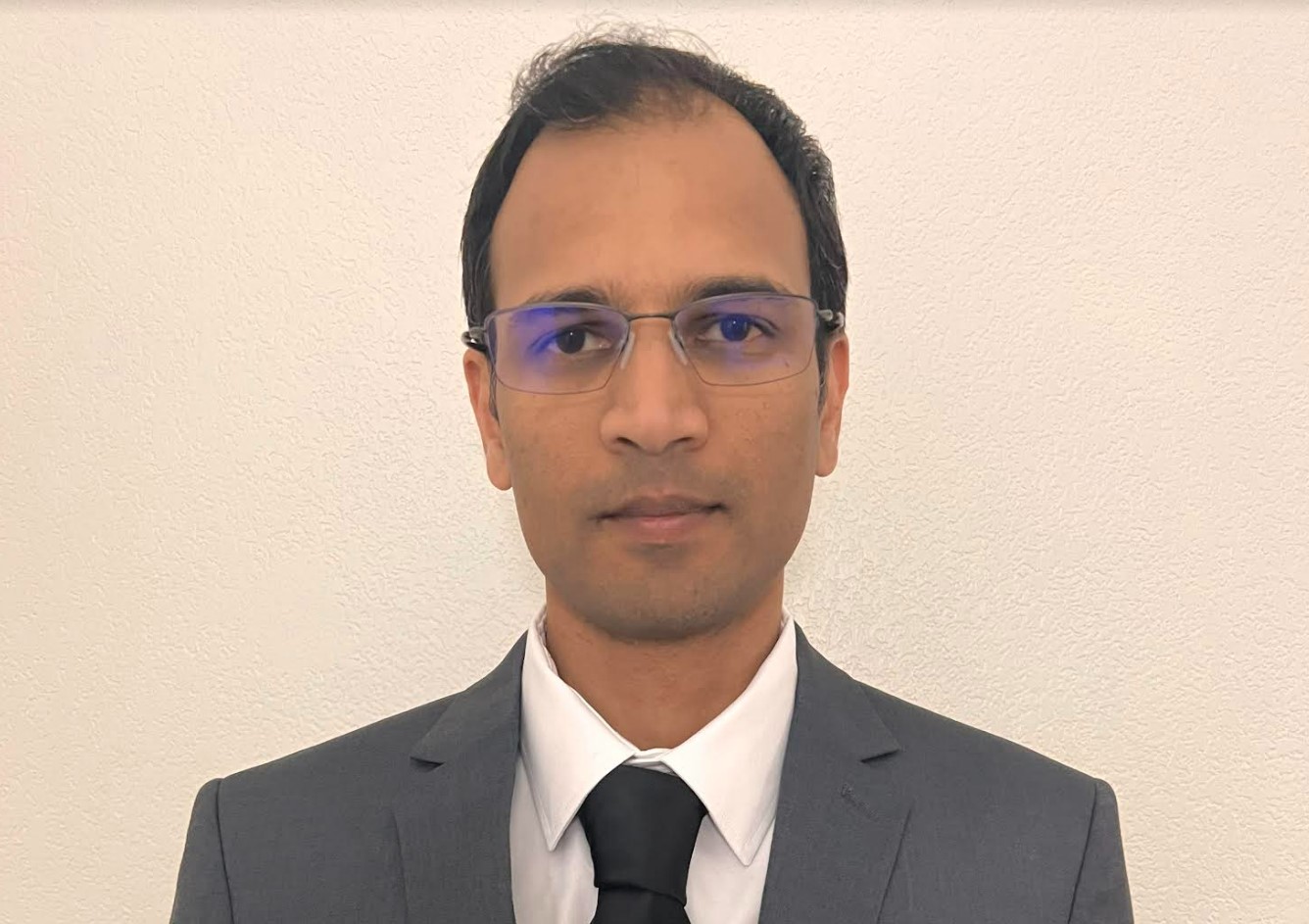Written by: James Carnell
After completing his undergraduate degree in information technology, Prabu Rajendran took a role as a lead consultant at IGT Gaming. There, he created a number of games and digital experiences for customers of state lotteries. This experience was pivotal in helping Prabu understand how users interact with digital interfaces, what they expect from these types of experiences, and how to adapt solutions to better fit customer requirements.
Growing in his own career, Prabu quickly developed a talent for applying digital solutions to customer challenges, helping organizations serve their clients better. He spent 12 years as an AI and automation director, leading multiple industries in digital transformation efforts. Understanding how to apply data science, robotics, machine learning, and other digital tools was a fairly new niche at the time, but now, digital strategy is critical to business success. For Prabu, digital transformation has proven its worth time and time again; he’s seen businesses go from struggling to thriving in less than a year, all with the help of cutting-edge technologies.
The global fraud detection and prevention market was worth $25 billion globally in 2021, and that number is expected to shoot up to $127 billion by 2029. Securely handling financial information in the digital age is a massive challenge; although tools are advancing, so are hackers and money launderers. Staying one step ahead of criminals and illicit money sources, Prabu worked with many financial institutions to bolster their security efforts and analyze customer behavior with renewed digital infrastructure. He built AI solutions that monitored credits, deposits, and other transactions to look out for money laundering or fraud. These solutions helped financial institutions and government regulators identify accounts that were being used for illegal purposes like drug trafficking.
Working with large enterprise companies, Prabu helped implement data-driven decision-making tools, automation tools, and other innovative tech solutions. These massive organizations have to bring new products to market with speed and efficiency, and when the world became more digital, they had to adapt quickly. He worked with finance, insurance, and healthcare enterprises to leverage digital transformation to maintain their competitive edges.
One client was an insurance company that utilized computer vision and deep learning to enable drone-based image capturing for insurance assessments and insurance fraud protection. With speech-to-text technologies to make it easier for customers to connect with customer service, phone times went down, and response times got faster. Robots began to supplement back-office tasks, increasing efficiency and helping the organization become a leader in digital transformation efforts within their industry. Prabu was the thought leader behind these implementations, and because of his expertise, his client reached new levels of success.
When it comes to sourcing and keeping talent, large organizations struggle with turnover, screening volume, and finding the right people to put into specific roles. With artificial intelligence and automated talent screening systems, these tasks become much faster, allowing talent professionals to spend more time with people and less time on paperwork. With his own knowledge of digital tools, Prabu helped these organizations define the skill sets they needed for more technical roles, resulting in properly equipped individuals joining the organization.
Digital tools can make or break organizations in today’s digital landscape. On the one hand, they have to catch up to the industry’s, and client’s, expectations surrounding technology, but on the other, implementing digital tools improperly can cause long-term problems that can negatively impact an organization’s future. With experts like Prabu, digital solutions are more accessible and more effective. Everyone benefits from this dynamic; customers get what they need faster, employees are less stressed at work, and organizations continue to thrive.
This article does not necessarily reflect the opinions of the editors or management of EconoTimes



 Moore Threads Unveils New GPUs, Fuels Optimism Around China’s AI Chip Ambitions
Moore Threads Unveils New GPUs, Fuels Optimism Around China’s AI Chip Ambitions  DOJ Reaches Settlement With Blackstone’s LivCor Over Alleged Rent Price-Fixing
DOJ Reaches Settlement With Blackstone’s LivCor Over Alleged Rent Price-Fixing  John Carreyrou Sues Major AI Firms Over Alleged Copyrighted Book Use in AI Training
John Carreyrou Sues Major AI Firms Over Alleged Copyrighted Book Use in AI Training  Sanofi to Acquire Dynavax in $2.2 Billion Deal to Strengthen Vaccines Portfolio
Sanofi to Acquire Dynavax in $2.2 Billion Deal to Strengthen Vaccines Portfolio  Eli Lilly and Novo Nordisk Battle for India’s Fast-Growing Obesity Drug Market
Eli Lilly and Novo Nordisk Battle for India’s Fast-Growing Obesity Drug Market  Mexico Antitrust Review of Viva Aerobus–Volaris Deal Signals Growth for Airline Sector
Mexico Antitrust Review of Viva Aerobus–Volaris Deal Signals Growth for Airline Sector  South Korean Court Clears Korea Zinc’s $7.4 Billion U.S. Smelter Project, Shares Surge
South Korean Court Clears Korea Zinc’s $7.4 Billion U.S. Smelter Project, Shares Surge  Warner Bros Discovery Weighs Amended Paramount Skydance Bid as Netflix Takeover Battle Intensifies
Warner Bros Discovery Weighs Amended Paramount Skydance Bid as Netflix Takeover Battle Intensifies  Saks Global Weighs Chapter 11 Bankruptcy Amid Debt Pressures and Luxury Retail Slowdown
Saks Global Weighs Chapter 11 Bankruptcy Amid Debt Pressures and Luxury Retail Slowdown  Italy Fines Apple €98.6 Million Over App Store Dominance
Italy Fines Apple €98.6 Million Over App Store Dominance  Texas App Store Age Verification Law Blocked by Federal Judge in First Amendment Ruling
Texas App Store Age Verification Law Blocked by Federal Judge in First Amendment Ruling  Boeing Wins $2.04B U.S. Air Force Contract for B-52 Engine Replacement Program
Boeing Wins $2.04B U.S. Air Force Contract for B-52 Engine Replacement Program  FDA Approves Mitapivat for Anemia in Thalassemia Patients
FDA Approves Mitapivat for Anemia in Thalassemia Patients  Waymo Plans Safety and Emergency Response Upgrades After San Francisco Robotaxi Disruptions
Waymo Plans Safety and Emergency Response Upgrades After San Francisco Robotaxi Disruptions  AstraZeneca’s LATIFY Phase III Trial of Ceralasertib Misses Primary Endpoint in Lung Cancer Study
AstraZeneca’s LATIFY Phase III Trial of Ceralasertib Misses Primary Endpoint in Lung Cancer Study  California Regulator Probes Waymo Robotaxi Stalls During San Francisco Power Outage
California Regulator Probes Waymo Robotaxi Stalls During San Francisco Power Outage  FTC Praises Instacart for Ending AI Pricing Tests After $60M Settlement
FTC Praises Instacart for Ending AI Pricing Tests After $60M Settlement 




























